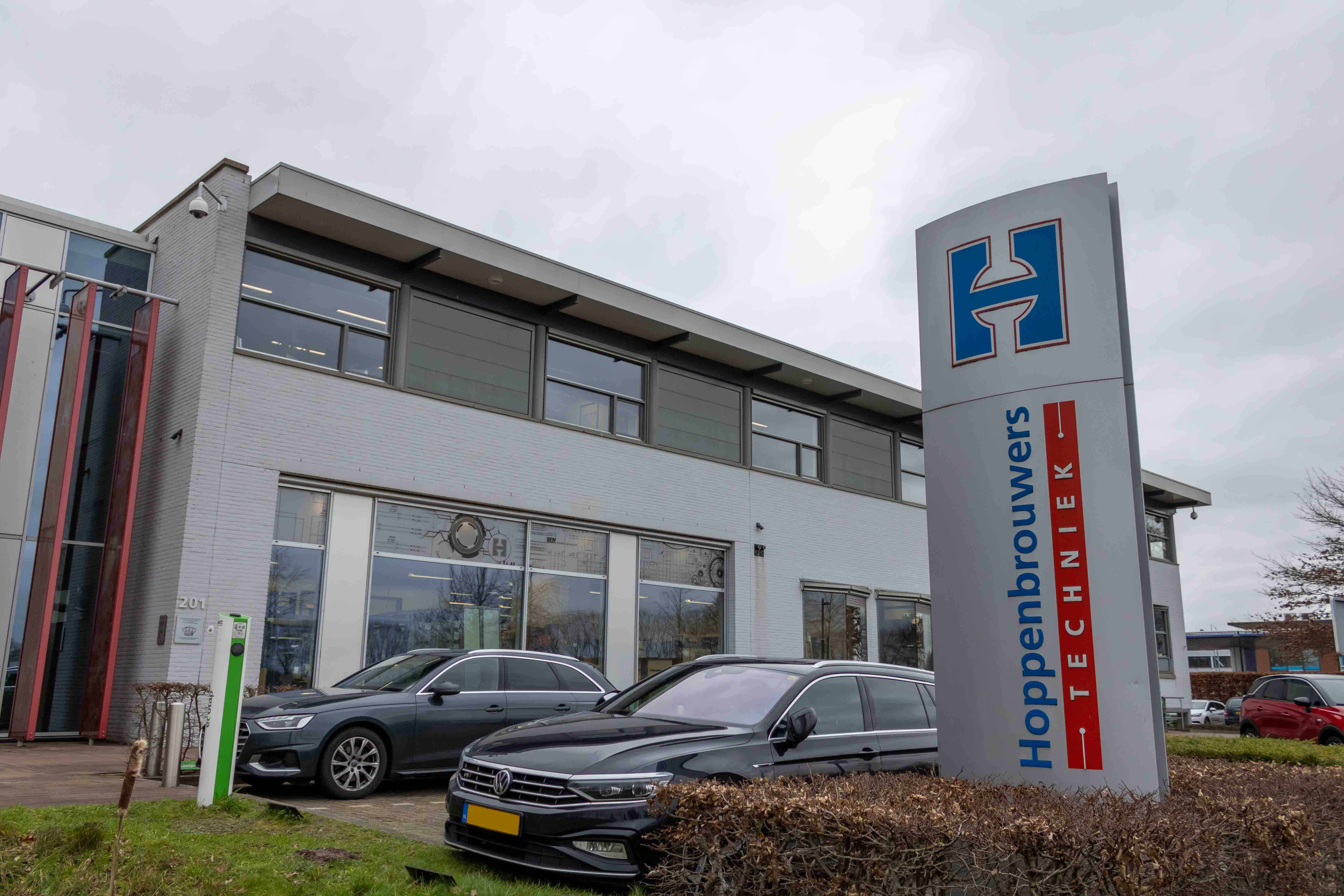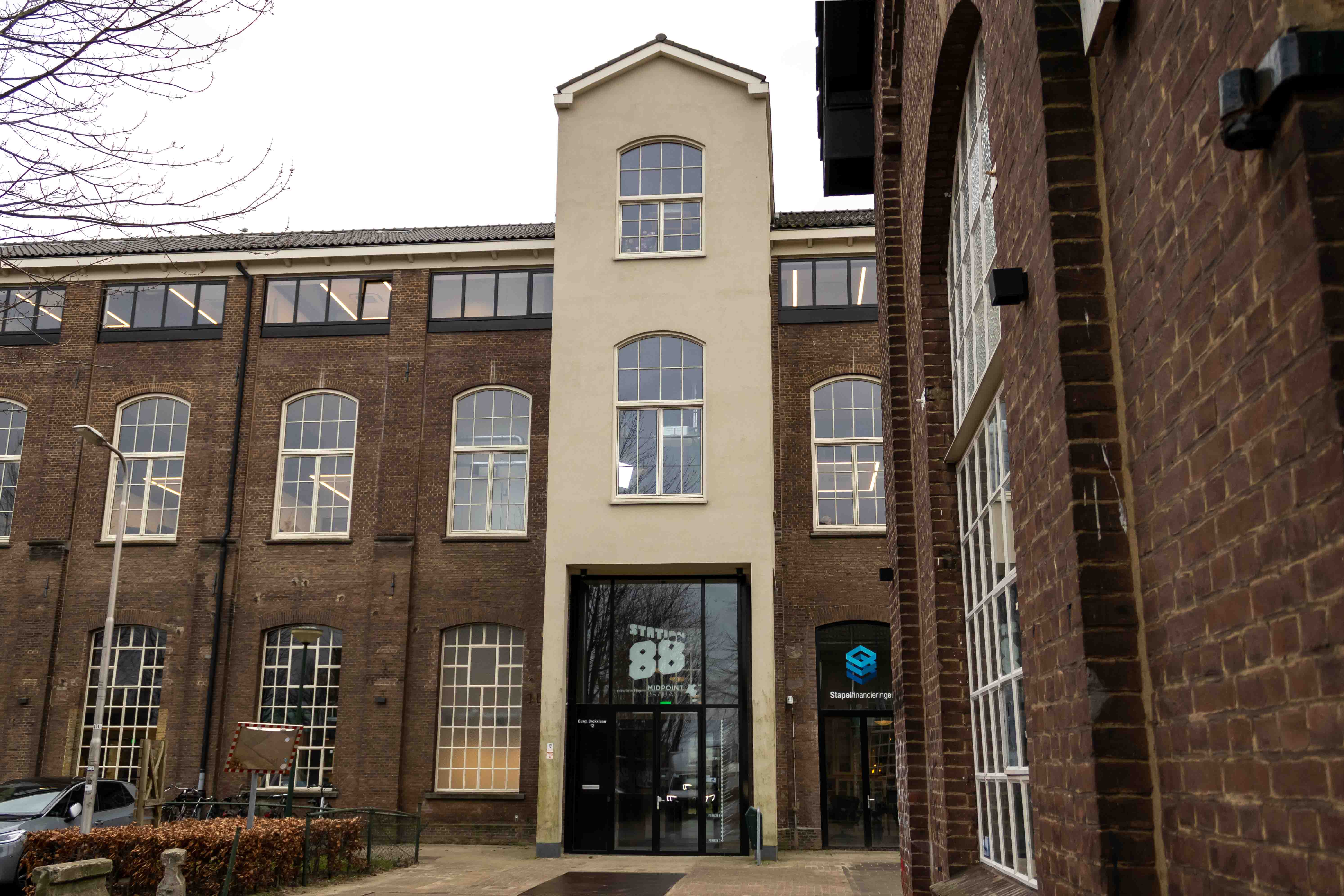
When Frits van Hout, a member of ASML’s Executive Board, looks out of the window on the 17th floor of his Veldhoven office, he can easily identify a large part of ASML’s supply chain. But what is also striking is the high level of activity, even now, at the beginning of June 2020, in the middle of the Coronacrisis. “Construction is taking place everywhere, but there is also plenty of activity within those company buildings. The high tech industry in this region has worked hard in recent weeks, albeit with a few hiccups, to keep our country going and save us from worse things. And that’s pretty much worked out.”
Read more about Dutch Technology Week 2020 here
In recent months, Frits van Hout has not only had his hands full keeping ASML up and running, but he also led the organizing team of Dutch Technology Week, which will take place entirely online this year. “What applies to both projects is that the extent to which people want to help each other right now, simply on the basis of mutual trust, is enormous. That is one of the most beautiful things of our time. And if you then see where the help comes from, you can see that – in addition to the well-known large companies – it is often also the somewhat smaller companies that want to jump in immediately. Within the network of Brainport Industries, we have done a call round to identify who could do what to solve the problems that have arisen. One offered his contacts in Taiwan, the other knew how to 3D-print parts that were out of stock, everyone could add something. How quickly everyone found each other and how quickly the tasks were distributed on-the-fly, how flexibly everyone jumped in, even outside their business field, that’s striking. That is very typical for this region and this sector, the companies that are active here have high flexibility, they trust each other, and if asked, just do what’s requested. Super.”
In the meantime listen to the podcast with Frits van Hout (in Dutch):
Positive experience
This spirit was also reflected within the DTW team. “We spent a long time looking for ways to organize a ‘classic’ DTW, but even when it was completely clear that that wouldn’t be possible, we continued to look for alternatives as a group through our Team and Skype sessions. And in doing so, we gratefully used the new possibilities offered by the technology. “It wasn’t allowed in the old days, we thought it was far too dangerous. But for me it was an enormously positive experience: the accessibility of the technology combined with the inaccessibility of the physical setting forced the whole world to experiment with things that we might have known before but had always dismissed as awkward or dangerous or whatever: telemeeting, home office, augmented reality. That’s all definitely broken through now.”
Behind the scenes
The goal of the DTW remains as it was: a look behind the scenes at companies and institutes, showing young people how much fun technology is, but above all how much fun it is to participate in it yourself. “That participation is becoming increasingly broad: it’s no longer just about making products, as professionals, but technology is now everywhere and everyone has to deal with it. So you also get more often the discussion about what the role of technology is in society. DTW is also an excellent opportunity for this.” ‘Participation’ will be different this year though. “Physical meetings will be limited, but online we will probably attract a wider audience because the accessibility is much less place or time-bound. As long as you realize that not everything online is only good. Even in ordinary life, we know that a certain degree of human contact remains important. So also in this DTW, we show that: in the setting of the school we provide joint activities in which children work on technical solutions, even now.”
Exactly what the DTW will look like next year is still a big question, but Frits van Hout is sure that elements of this year will be included. “Just as everyone, despite all the misery, has seen that there are new solutions that open up new possibilities, so too have we: the reason wasn’t so good, but once we know this, it’s actually quite handy.”
Silicon Valley and Eindhoven
This may also have the side-effect that the desire to scale up the DTW, which has been around for a few years, is now more feasible. “Last year we already had 22 locations across the Netherlands, but our ambitions go further. To some extent, we are also going to use the extra funds that have come our way from the Regional Fund for this purpose.”
This international connection for Dutch Technology is, by the way, more logical than an outsider might think, says Van Hout. “If you ask people to name the hotbeds of innovation, then, of course, you first always hear Silicon Valley, where it all started. Other people say Asia: Japan, Taiwan, China. But more and more often you also hear people call out the Netherlands. You also see it in all kinds of lists: California, Shanghai, and Eindhoven are mentioned next to each other. And that’s not for nothing. It’s because of all the things happening here. This may not yet have penetrated all households, but certainly, in the technical community, this region is definitely seen as one of the hotbeds of technology. That’s also the beauty of technology: ideas can originate somewhere, but can then be developed elsewhere. Other people can take part in this; many companies have branches in different parts of the world and make grateful use of them. It is precisely this mix of cultures and experiences that creates things that you could not have foreseen beforehand. But always realize that nature is also very tough: things that don’t work, just don’t work, which means that you will have to come up with something else. Innovation means getting up just once more than falling down. If so, all will be fine.”







